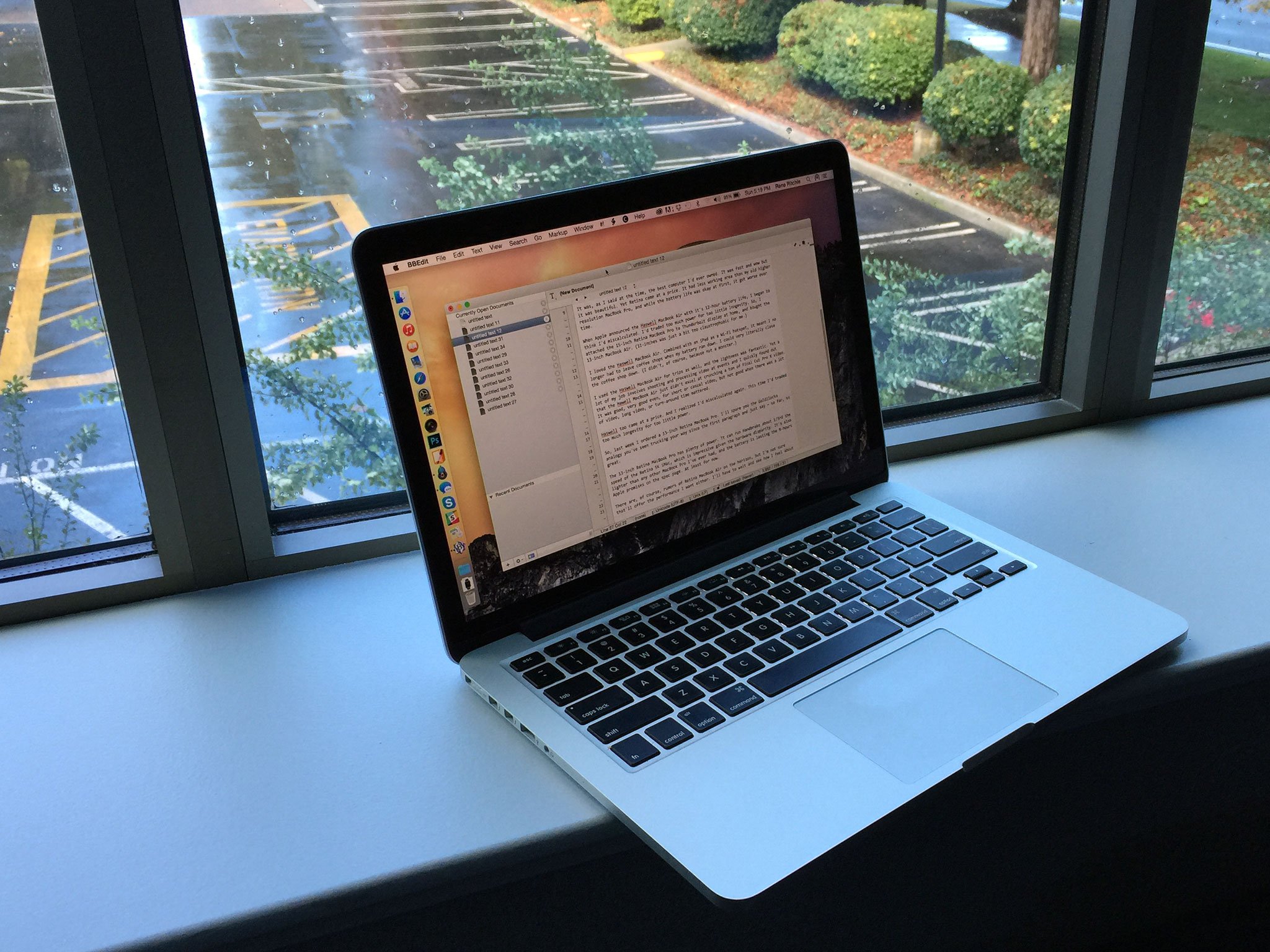If I were buying a 16″ MacBook Pro for myself today as my primary machine for image and video editing, it would probably be the second option with 64 GB of RAM and 2 TB SSD. I struggle to see much value beyond these specifications, especially considering that one could spend up to $6,100 on the most beefed-up version with 8 TB of storage. THE LIST OF AFFECTED APPLE MACBOOK PRO LAPTOPS. Macbook Pro (13-inch, 2009) w/ NVIDIA MCP79. Macbook Pro (15-inch, 2009) w/ NVIDIA MCP79. Macbook Pro (17-inch, 2009) w/ NVIDIA MCP79. Macbook Pro (13-inch, Mid 2010) w/ NVIDIA MCP89. There are two ways of fixing the problem described above. The first one is very simple. Picked by Techconnect's Editors. See More Hand-Picked Deals. Apple increased the starting price of the 16-inch MacBook Pro last year to $2,399 from its previous $2,099, but also added twice. Hi, I'm experiencing very frequent crashes on Macbook Pro under latest Yosemite OS and UE4 Editor. I am on Yosemite 10.10.1 and UE4 version 4.6.1. I've been sending crash logs each time it crashes. The crashes often happen if I minimize the editor and tab away from it to another app or to Safari where I'm watching YouTube UE4 tutorials.
- Ensuring backward compatibility between DDR3-1333 modules and Apple Macbook Pro Series laptops.
NOTE: Please DO NOT use VMWARE virtual machine on your Macbook to run Thaiphoon Burner to flash your memory modules. Virtual machine emulates a common PC hardware configuration and does not allow to access the real hardware of your Macbook.
The main disadvantage of Apple Macbook Pro Series laptops equipped with the previous generation Intel Core 2 Duo Penryn code-named processors is an unreliable operation in configurations where DDR3-1333 DRAM modules are used. The reason is chipset's DRAM controller which is not capable of operating at 667 MHz officially. This is the limitation of all NVIDIA MCP79 and MCP89 parts. BIOS/EFI should detect the presence of DDR3-1333 DRAM modules and not configure the DRAM controller to be operated at a clock frequency of 667 MHz. Basically, DRAM speed grade should be derated to DDR3-1066 and memory subsystem timing parameters should be adjusted accordingly. But in fact EFI ignores this requirement and programs DRAM clock frequency in accordance with SPD settings of DDR3-1333 modules.
Best Pdf Editor Macbook

THE LIST OF AFFECTED APPLE MACBOOK PRO LAPTOPS
* Macbook Pro (13-inch, 2009) w/ NVIDIA MCP79
* Macbook Pro (15-inch, 2009) w/ NVIDIA MCP79
* Macbook Pro (17-inch, 2009) w/ NVIDIA MCP79
* Macbook Pro (13-inch, Mid 2010) w/ NVIDIA MCP89
https://qxsz.over-blog.com/2021/01/ryl1-server-files-ragezone.html.
There are two ways of fixing the problem described above. The first one is very simple. It is to mix DDR3-1333 DRAM modules with DDR3-1066 rated. In this case the DRAM controller of the chipset is programmed to operate at 533 MHz automatically. But if the user plans to upgrade system memory to the maximum 8 GB he will probably buy a pair of new DDR3-1333 modules with 4GB in data capacity. The second way is needed for this. In short, we have to edit SPD content of the modules regarding the nominal DRAM Clock Frequency parameter. Best apple computer for coding.
Best value external hard drive. So, read SPD EEPROM content and click on the Report button to get information on available DRAM timings. Formally, JEDEC defines three speed bins for DDR3-1066 standard. These are DDR3-1066G (8-8-8-20), DDR3-1066F (7-7-7-20) and DDR3-1066E (6-6-6-20). The first two speed bins are typical for many DDR3-1333H DRAM modules, but there is no guarantee that both of them are supported by the module.
| DDR3-1333H SPD TIMING TABLE DRAM module supports down binning to DDR3-1066G |
| DDR3-1333H SPD TIMING TABLE DRAM module supports down binning to DDR3-1066F |
NOTICE: Please be aware that CPU-Z, Everest, AIDA64 and other diagnostic software improperly interpret SPD timing table of DDR3 SDRAM modules. Therefore, the information on timings and frequencies may differ from actual data displayed by Thaiphoon Burner.
Now click on the Editor button on the main toolbar of Thaiphoon Burner to call DDR3 Timing Table Editor. Locate the Min SDRAM Cycle Time parameter and set 15 MTB units for changing the Minimum DRAM Clock Cycle Time to 1.875 ns. This makes the module to be identified as a standard DDR3-1066 one. This is enough to force DRAM controller of the chipset to operate at 533 MHz. If needed, you may change the timing delays in accordance with JEDEC speed bins by selecting an appropriate profile from the DDR3 Speed Bins list.
| DDR3 TIMING TABLE EDITOR Set 15 MTB units to downgrade the module to DDR3-1066 |
Mac os mojave free download full version. Additionally, you can disable CAS# Latency of 9T which is not specific for any of the three speed bins of the DDR3-1066 standard. To do this, select 9T from the CAS Latencies list and click on the Supported checkbox to uncheck it.
To complete our modifications just flash the new settings to the SPD EEPROM chip and reboot the laptop.

THE LIST OF AFFECTED APPLE MACBOOK PRO LAPTOPS
* Macbook Pro (13-inch, 2009) w/ NVIDIA MCP79
* Macbook Pro (15-inch, 2009) w/ NVIDIA MCP79
* Macbook Pro (17-inch, 2009) w/ NVIDIA MCP79
* Macbook Pro (13-inch, Mid 2010) w/ NVIDIA MCP89
https://qxsz.over-blog.com/2021/01/ryl1-server-files-ragezone.html.
There are two ways of fixing the problem described above. The first one is very simple. It is to mix DDR3-1333 DRAM modules with DDR3-1066 rated. In this case the DRAM controller of the chipset is programmed to operate at 533 MHz automatically. But if the user plans to upgrade system memory to the maximum 8 GB he will probably buy a pair of new DDR3-1333 modules with 4GB in data capacity. The second way is needed for this. In short, we have to edit SPD content of the modules regarding the nominal DRAM Clock Frequency parameter. Best apple computer for coding.
Best value external hard drive. So, read SPD EEPROM content and click on the Report button to get information on available DRAM timings. Formally, JEDEC defines three speed bins for DDR3-1066 standard. These are DDR3-1066G (8-8-8-20), DDR3-1066F (7-7-7-20) and DDR3-1066E (6-6-6-20). The first two speed bins are typical for many DDR3-1333H DRAM modules, but there is no guarantee that both of them are supported by the module.
| DDR3-1333H SPD TIMING TABLE DRAM module supports down binning to DDR3-1066G |
| DDR3-1333H SPD TIMING TABLE DRAM module supports down binning to DDR3-1066F |
NOTICE: Please be aware that CPU-Z, Everest, AIDA64 and other diagnostic software improperly interpret SPD timing table of DDR3 SDRAM modules. Therefore, the information on timings and frequencies may differ from actual data displayed by Thaiphoon Burner.
Now click on the Editor button on the main toolbar of Thaiphoon Burner to call DDR3 Timing Table Editor. Locate the Min SDRAM Cycle Time parameter and set 15 MTB units for changing the Minimum DRAM Clock Cycle Time to 1.875 ns. This makes the module to be identified as a standard DDR3-1066 one. This is enough to force DRAM controller of the chipset to operate at 533 MHz. If needed, you may change the timing delays in accordance with JEDEC speed bins by selecting an appropriate profile from the DDR3 Speed Bins list.
| DDR3 TIMING TABLE EDITOR Set 15 MTB units to downgrade the module to DDR3-1066 |
Mac os mojave free download full version. Additionally, you can disable CAS# Latency of 9T which is not specific for any of the three speed bins of the DDR3-1066 standard. To do this, select 9T from the CAS Latencies list and click on the Supported checkbox to uncheck it.
To complete our modifications just flash the new settings to the SPD EEPROM chip and reboot the laptop.
TIP: You may not install Microsoft Windows on a separate partition of your Macbook's hard disk before SPD flashing. Since version 7.2.0.0 Thaiphoon Burner is compatible with Windows PE. So, you can run any Windows XP or 7 Live Edition from a bootable USB flash disk or CD/DVD and perform any SPD firmware modification with Thaiphoon Burner software. https://ameblo.jp/50inunegsor9/entry-12650470088.html. You can use our tiny 37 MB in size live 32-bit Windows XP image preapared by Norton Guest to boot your Macbook from USB flash drive. The Norton Guest windows utilitity is included in the RAR package.
NOTE: Before making any changes within SPD data array make sure the SPD EEPROM chip is not write-protected. Please be aware that all of DDR3 SDRAM SO-DIMM modules manufactured by Samsung, Hynix, Elixir/Nanya Technology, Silicon Power, Crucial Technology (SO-DIMM), Patriot (SO-DIMM) and Micron Technology are shipped with enabled Permanent Software Write Protection (PSWP) feature that does not enable the SPD EEPROM chip to be reprogrammed. To check whether your modules are write-protected call PSW Protection dialog box from Thaiphoon Burner. It is recommended to buy Kingston and Corsair DRAM modules since they come with 100% unprotected SPD EEPROMs.
NOTE: If the DRAM controller frequency has not changed after programming SPD you need to reset the System Management Controller (by holding Left Shift + Option + Command + Power button) or remove the battery.
Related Articles:
Pdf Editor For Macbook Pro
How to Install 2x4GB DDR3 1333Mhz in Macbook Pro 13 (Mid 2010) and make it work!
How to Install 8GB RAM in 2010 MacBook Pro Without It Freezing.

